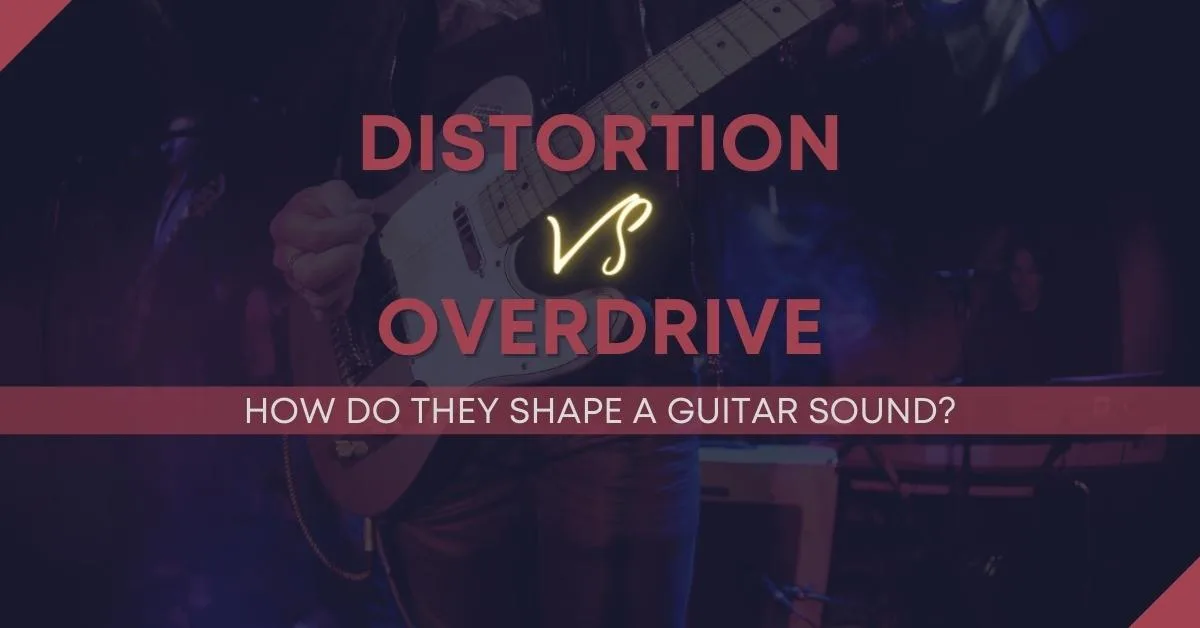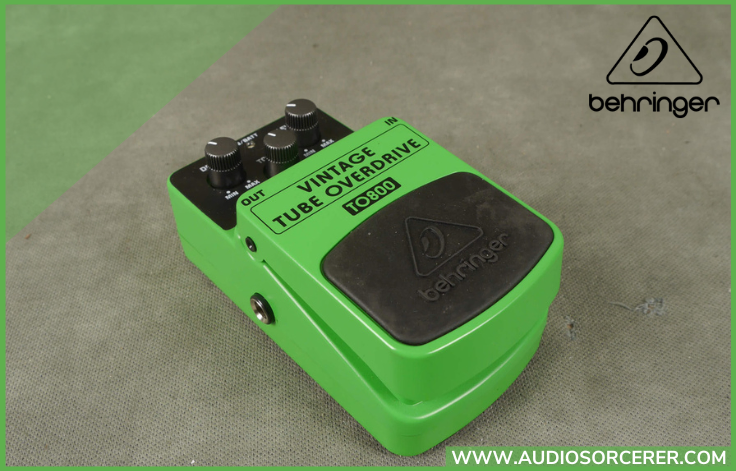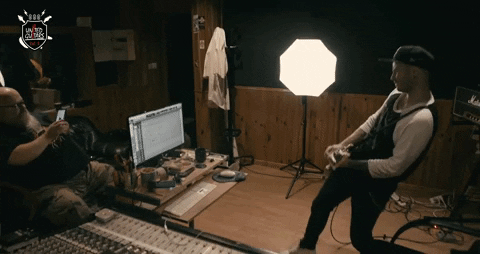
There are a number of different factors that go into shaping the sound of a guitar. In this article, we’re going to focus on two of the most popular tonal options: distortion vs overdrive. Both of these sounds have a significant impact on the tone of a guitar and are heard on some of the best records of all time.
Distortion itself is caused by the overloading of a guitar’s pickups. This results in a ‘saturated’ sound that is often described as ‘dirty’ or ‘gritty’. Overdrive, on the other hand, is a type of distortion that is caused by the clipping of a guitar’s signal. This results in a ‘cleaner’ sound that is often described as ‘smooth’ or ‘creamy’.
So, how do these two types of distortion shape a guitar sound? Read on to find out more in this battle of distortion vs overdrive!
Distortion when talking about the guitar is caused by overloading the pickups. This overloading can be caused by several different factors such as the type of amplifier being used, the type of pickups, the type of strings, and even the type of guitar being played. When a guitar’s pickups are overloaded, it results in a ‘saturated’ sound that is often described as ‘dirty’ or ‘gritty’.
There are a few different types of distortion, each with there own unique sound. There is overdrive, fuzz, and several others. These tones have all contributed to the sound of rock music and many other genres.
To sum up distortion, it is generally looked at as any signal that is not clean.
Picking the right distortion pedal can feel like an overwhelming task with so many options out there today. With a large selection of features, parameters, and price ranges, what should you get? Here are 3 distortion pedals you can't go wrong with.

The Behringer SF300 Super Fuzz Pedal is a great choice for those looking for a high-quality fuzz pedal at an affordable price. This pedal offers a wide range of tones, from classic fuzz to grunge to modern distorted sounds. It is designed to give you a thick, rich tone that will cut through any mix.
If you're looking for a fuzz pedal that can do it all, the Behringer SF300 is a great option. It's versatile, affordable, and built to last.
Buy On Amazon ➡️ CLICK HERE

The Boss DS-1 Distortion Pedal is a classic guitar pedal that has been used by many famous guitarists over the years. It's known for its simple design and sturdy construction. The pedal has three controls - Level, Tone, and Distortion. The Level control adjusts the overall volume of the pedal, the Tone control adjusts the treble-bass balance, and the Distortion control adjusts the amount of distortion.
The DS-1 has a very distinct sound that has been used on countless recordings. It's a great pedal for rock and metal guitarists, but can also be used for other styles of music. If you're looking for a distortion pedal that will give you a classic rock sound, the Boss DS-1 is a great option.
Buy On Amazon ➡️ CLICK HERE

The JHS PackRat 9-way rodent-style distortion pedal is a versatile and powerful pedal that can be used to create a variety of different sounds. With nine different distortion modes, this pedal gives you a wide range of tones to choose from. Whether you're looking for a clean boost or full-on distortion, the PackRat has you covered.
This pedal is also built with a sturdy metal chassis, making it durable and road-worthy. If you're looking for a high-quality distortion pedal that can give you a wide range of tones, the JHS PackRat is a great option.
Buy On Amazon ➡️ CLICK HERE
The most common type of distortion is called ‘overdrive’. Overdrive is caused by the clipping of a guitar’s signal. When a signal is clipped, it means that the peaks of the waveform are ‘truncated’. This results in a ‘cleaner’ sound that is often described as ‘smooth’ or ‘creamy’.
When looking at distortion vs overdrive, even though they are one in the same, they are completely different tonally.
Like distortion pedals, there are a plethora of overdrive pedals out on the market today. The options are truly endless. Here are my top favorite picks for the best overdrive pedals.

The Behringer TO800 Vintage Tube Overdrive Pedal is a great way to get that classic tube sound. This pedal can be used to achieve a wide range of overdrive tones, from light overdrive to full-on distortion. The pedal also features the original 4558 IC plus MA150 distortion diodes giving you that authentic vintage sound. The TO800 is a great choice for any guitarist who wants to add a classic tube overdrive pedal to their rig.
Buy On Amazon ➡️ CLICK HERE

The Ibanez TS9 Tube Screamer is a classic overdrive pedal that has been used by some of the biggest names in rock music. This pedal is known for its ability to produce warm, crunchy tones that can really add some extra depth to your sound. If you're looking to get those classic rock tones, the Ibanez TS9 Tube Screamer is the best choice on my list.
Buy On Amazon ➡️ CLICK HERE

JHS Morning Glory V4 Transparent Overdrive Pedal is a great choice for those who want to add a bit of extra drive to their sound without coloring their tone. This pedal is capable of adding a wide range of overdrive tones, from light crunch to full-on distortion. It's also transparent, meaning it won't color your tone or alter your sound in any way. The JHS Morning Glory V4 is a great choice for those who want to add a bit of extra drive to their sound without coloring their tone.
Buy On Amazon ➡️ CLICK HERE

We can't talk about distortion vs overdrive without discussing how they affect the sound of a guitar. The sound of a guitar is shaped by a number of different factors, including the type of distortion being used. Distortion can be used to create several different sounds, from ‘dirty’ and ‘gritty’ to ‘smooth’ and ‘creamy’. It all depends on how the distortion is used.
The impact distortion can have on a guitar can be as immense or as little as desired. It can make the sound louder, fuller, and more complex. It can also make the sound more aggressive or more mellow.
For example, overdrive distortion is often used to create a ‘bluesy’ sound, while fuzz distortion is often used to create a ‘rock’ sound. If you are looking to achieve a grunge or metal sound, you will want full-on distortion as opposed to overdrive. Choosing the right distortion is important in getting the right guitar tone to match the genre of music you are making.
Related Article: EQ Cheat Sheet | The Only Guide You'll Ever Need!
Though there are several other types of distortion in the audio world, there is really only one other for guitar and that is "Fuzz". Fuzz distortion is caused by a non-linear distortion of the signal. This type of distortion is often described as ‘fuzzy’, ‘breakup’, or ‘crunchy’. Fuzz distortion has a very distinct sound that has been heard on countless famous records since the 1950s.
In this article, we’ve looked at two of the most popular tones that shape a guitar sound: distortion vs overdrive. We’ve learned that distortion can have a significant impact on the tone of a guitar and that there are several different types of distortion, each with their own unique sound. So, now you know a bit more about how distortion shapes a guitar sound, experiment with different types of distortion to find the sound that you like best.
If you found the information in this article helpful, please consider subscribing to my blog for more music production tips, tricks, and advice. Now, go rock out with your favorite distortion pedal!
"Some of the links within this article are affiliate links. These links are from various companies such as Amazon. This means if you click on any of these links and purchase the item or service, I will receive an affiliate commission. This is at no cost to you and the money gets invested back into Audio Sorcerer LLC."